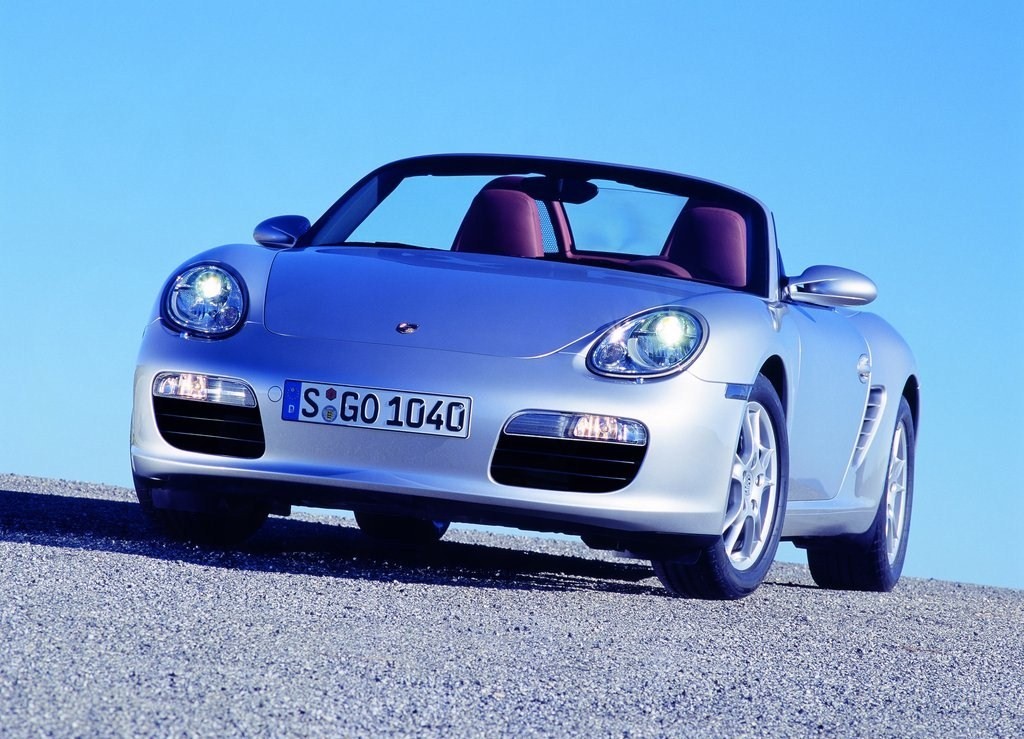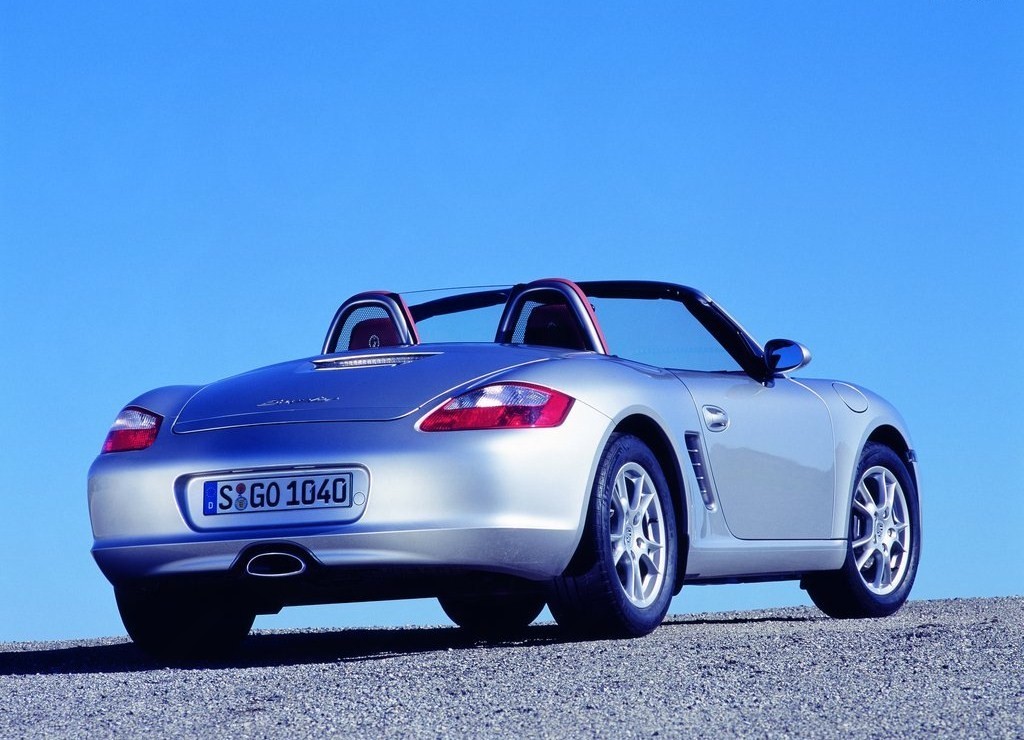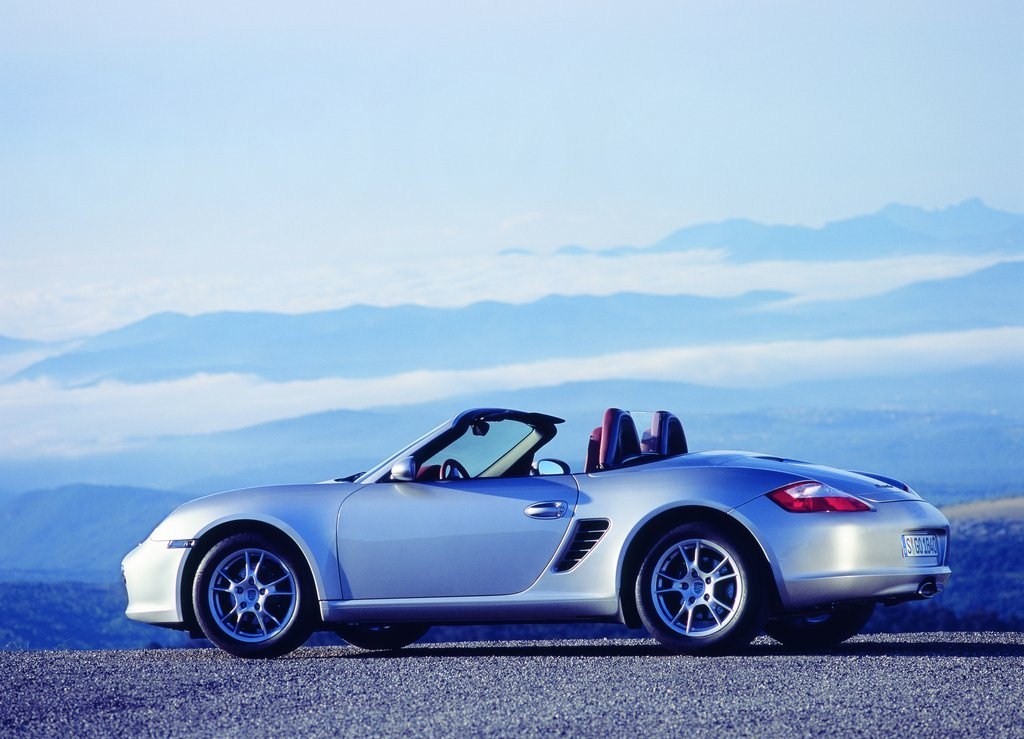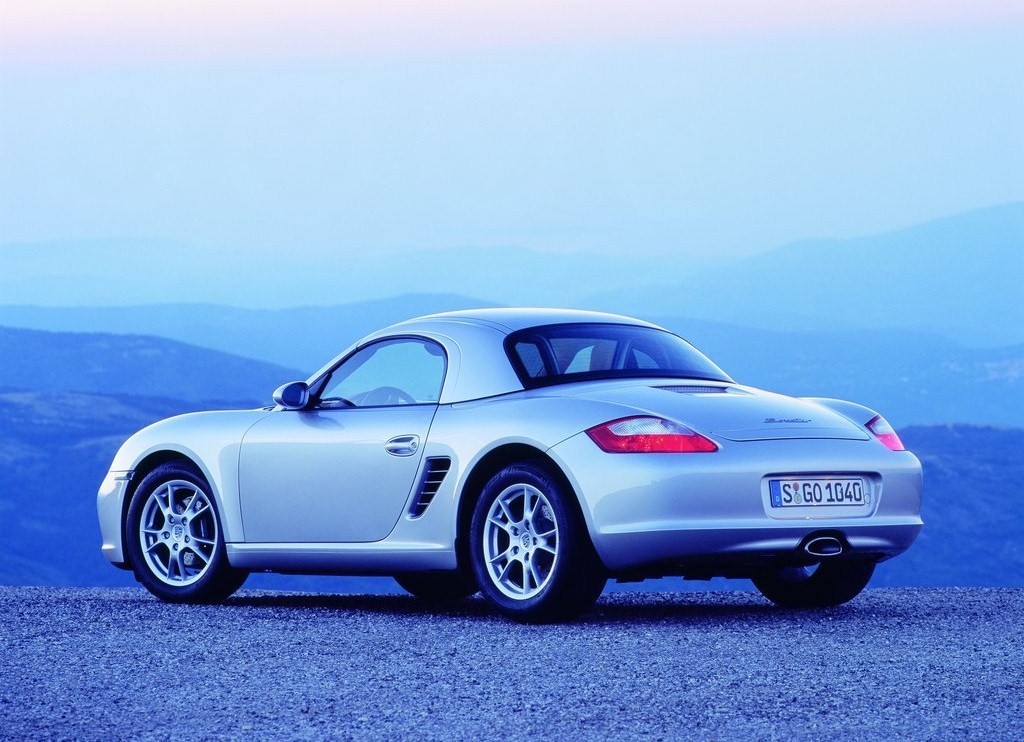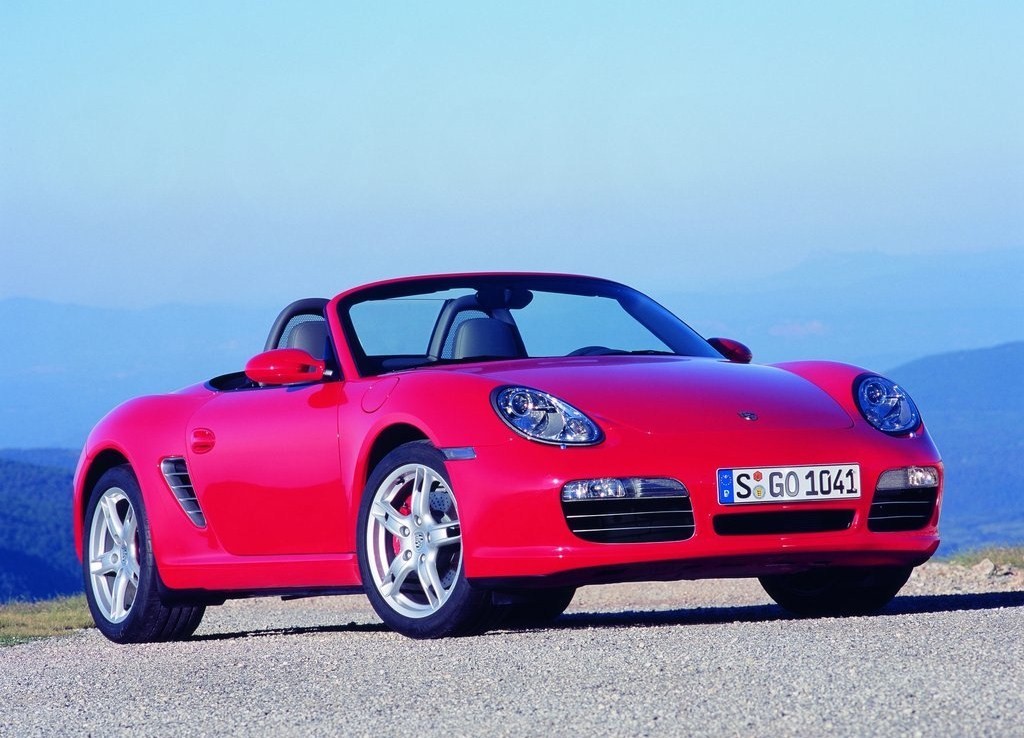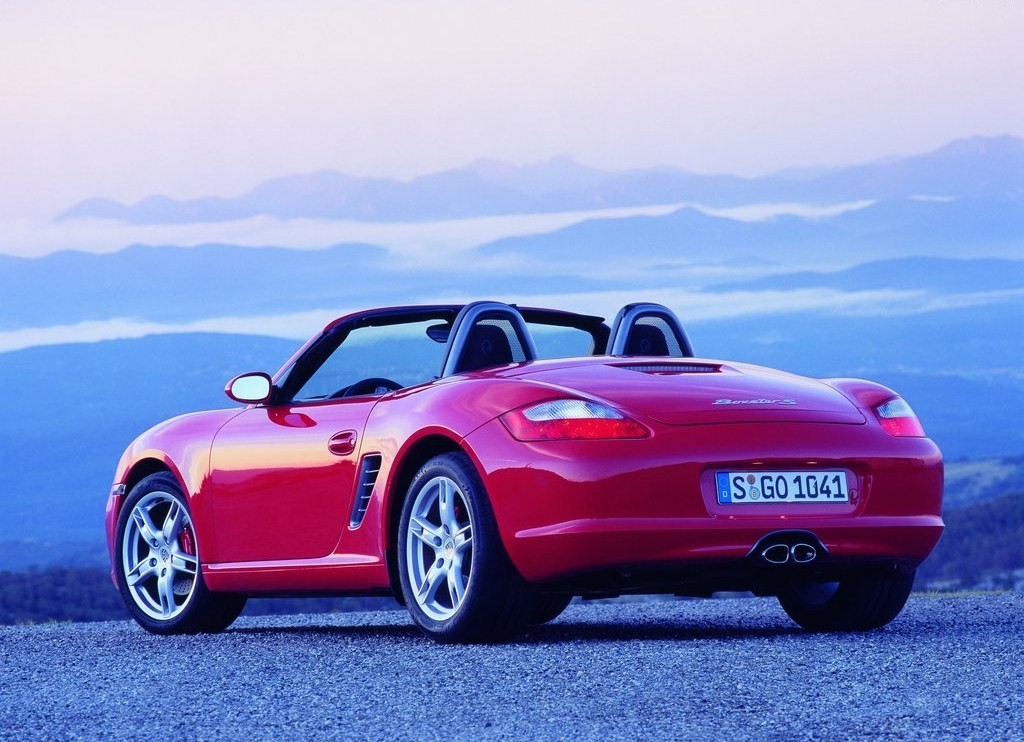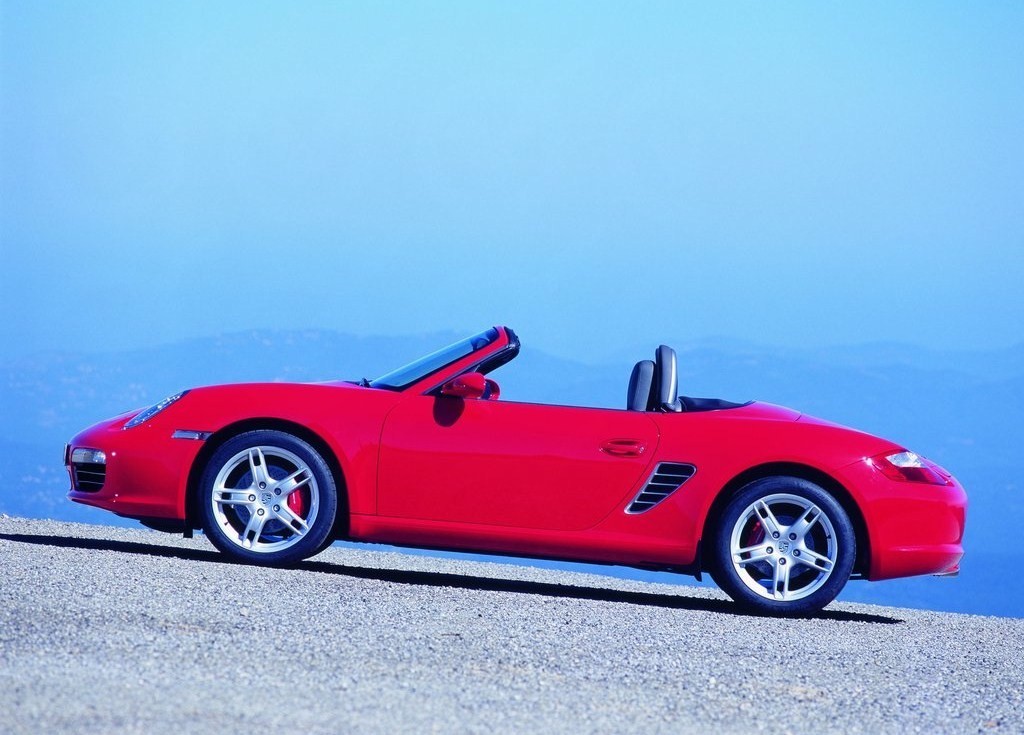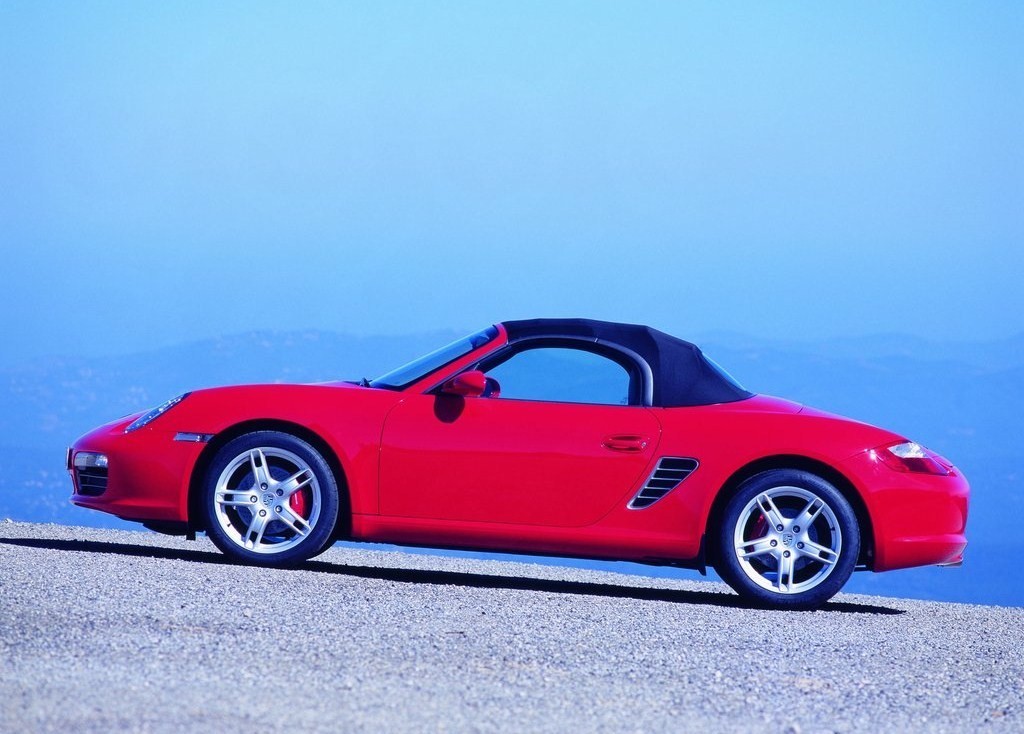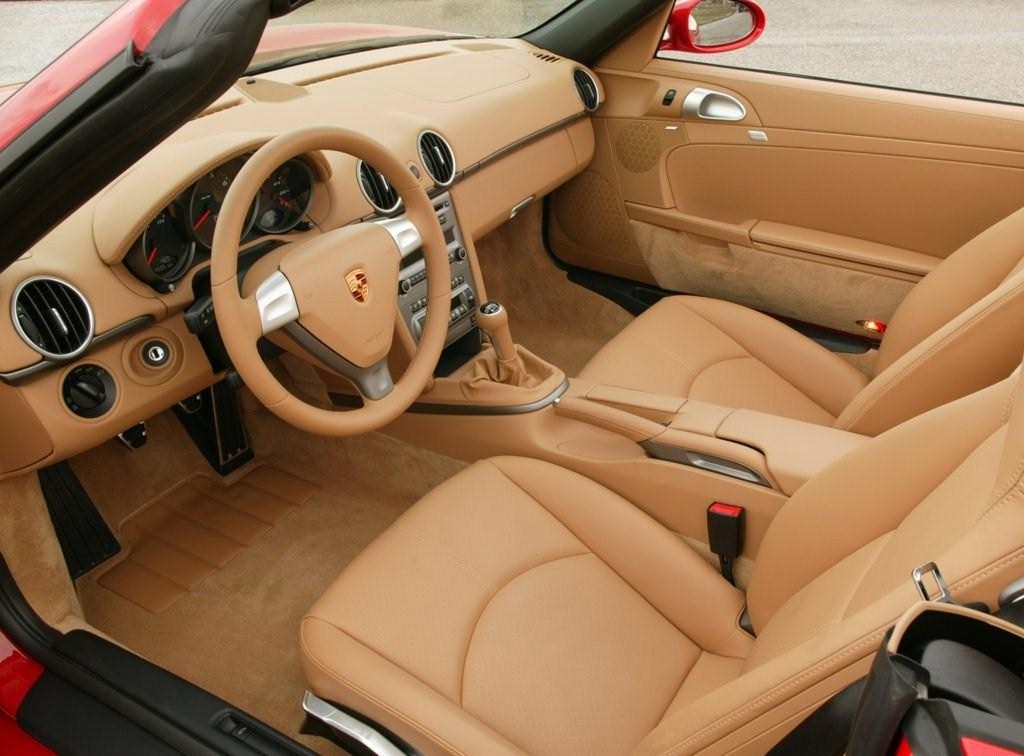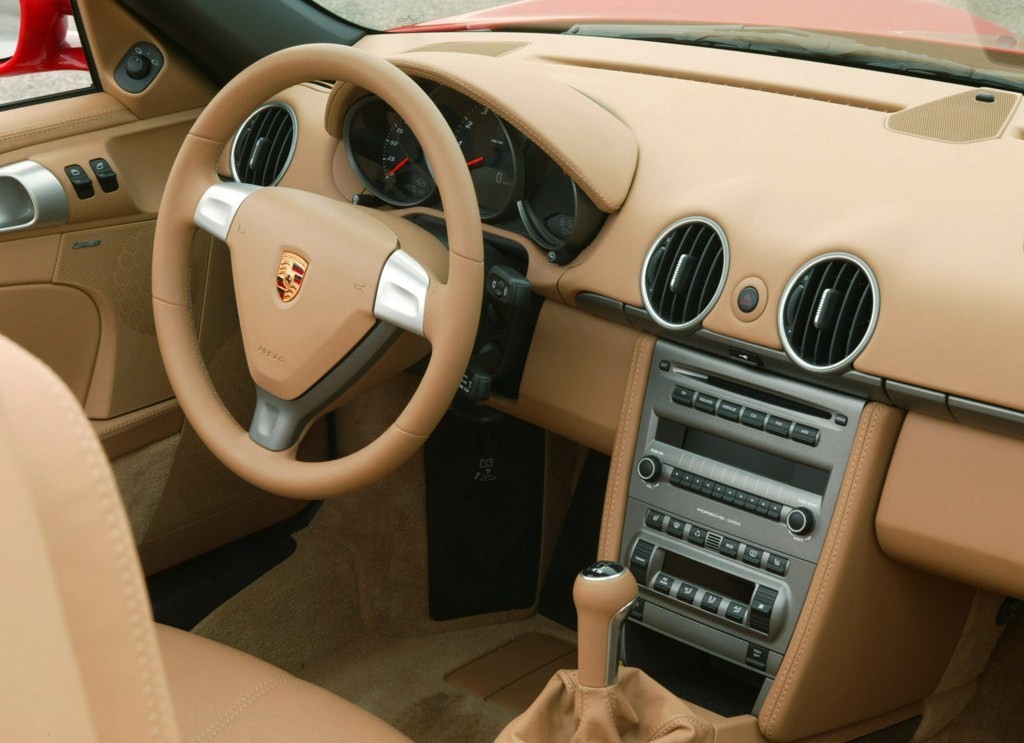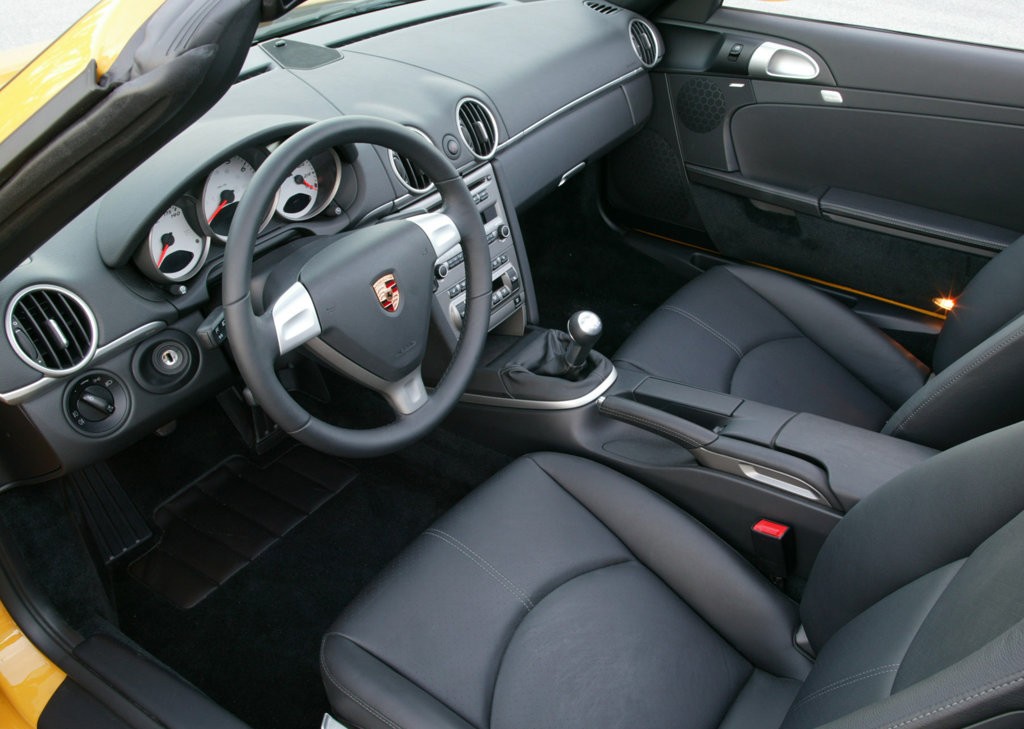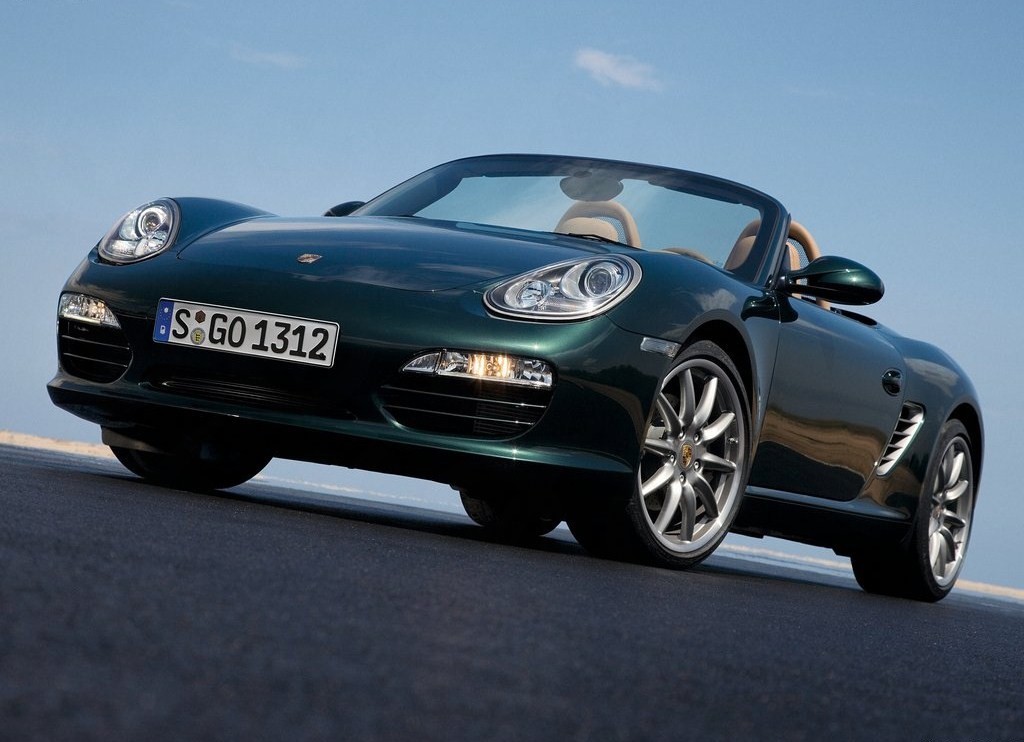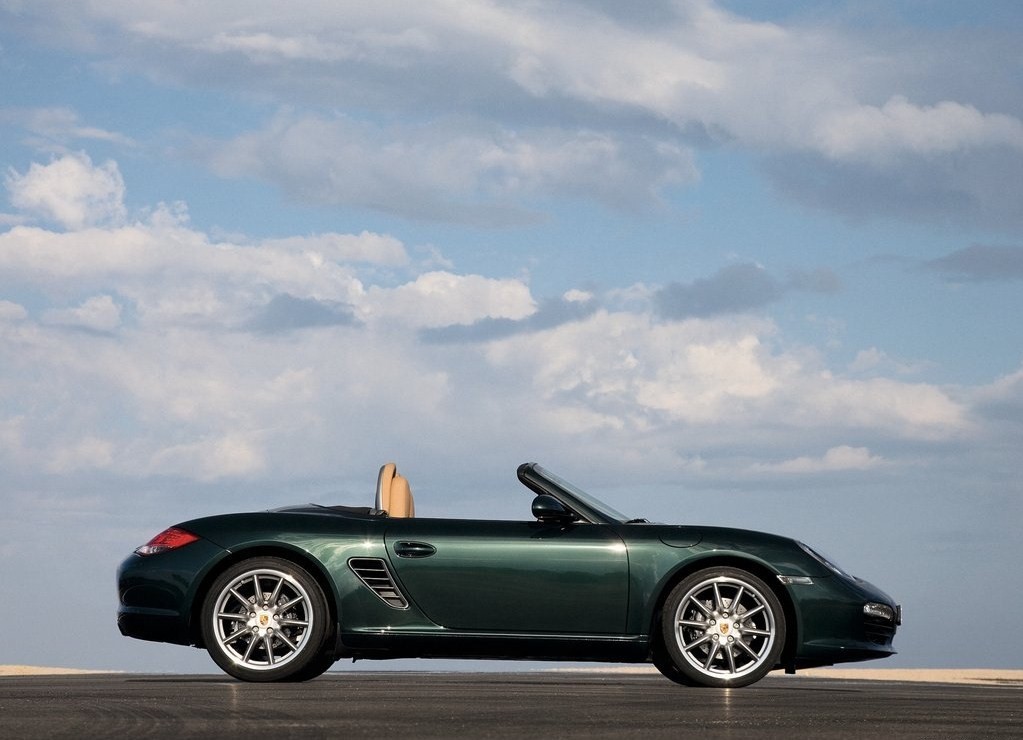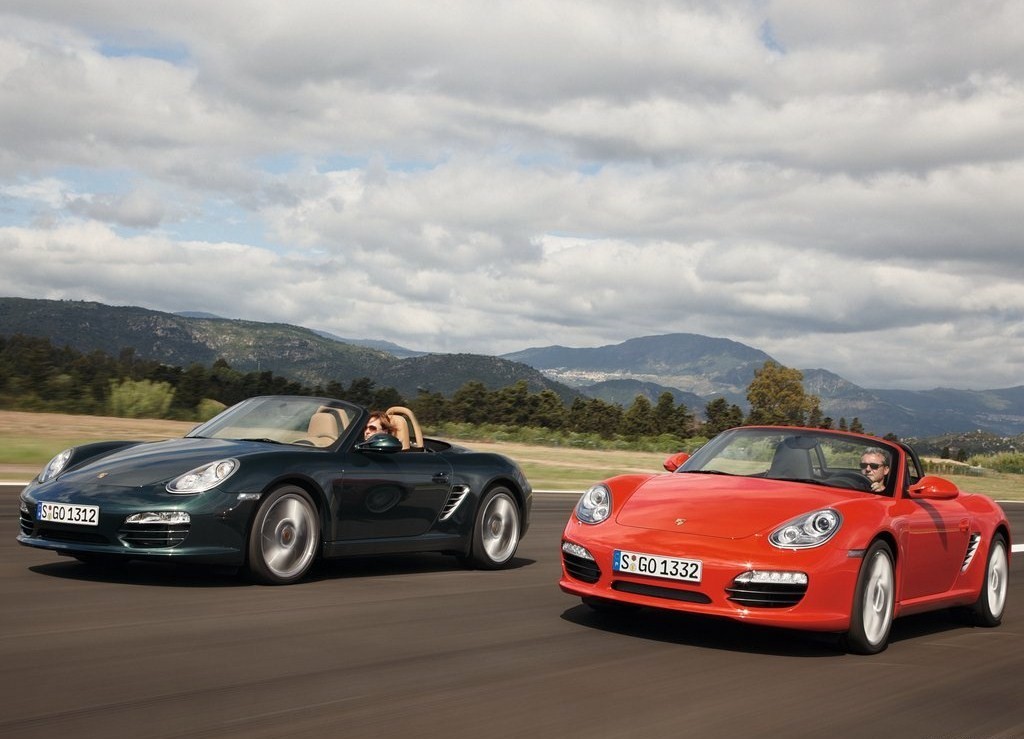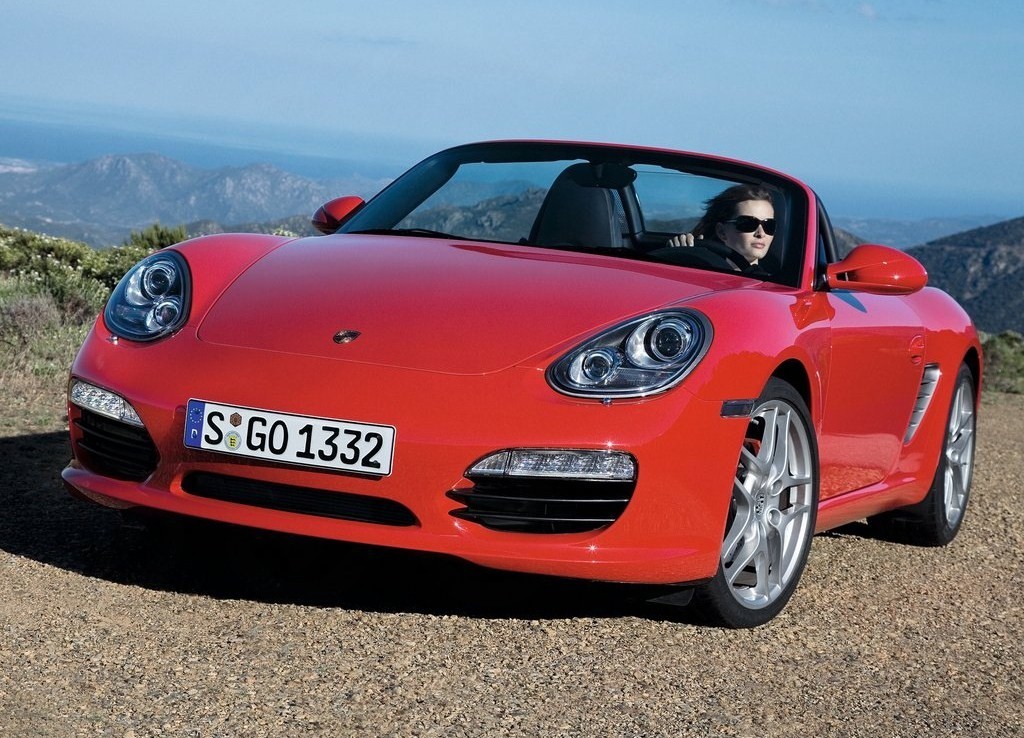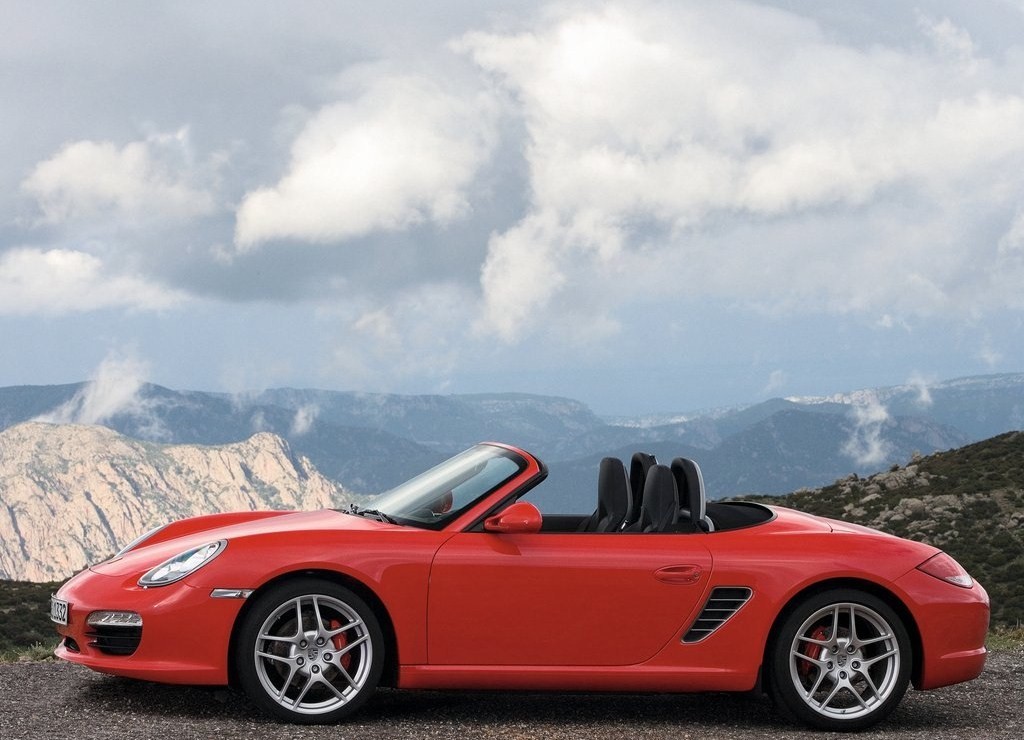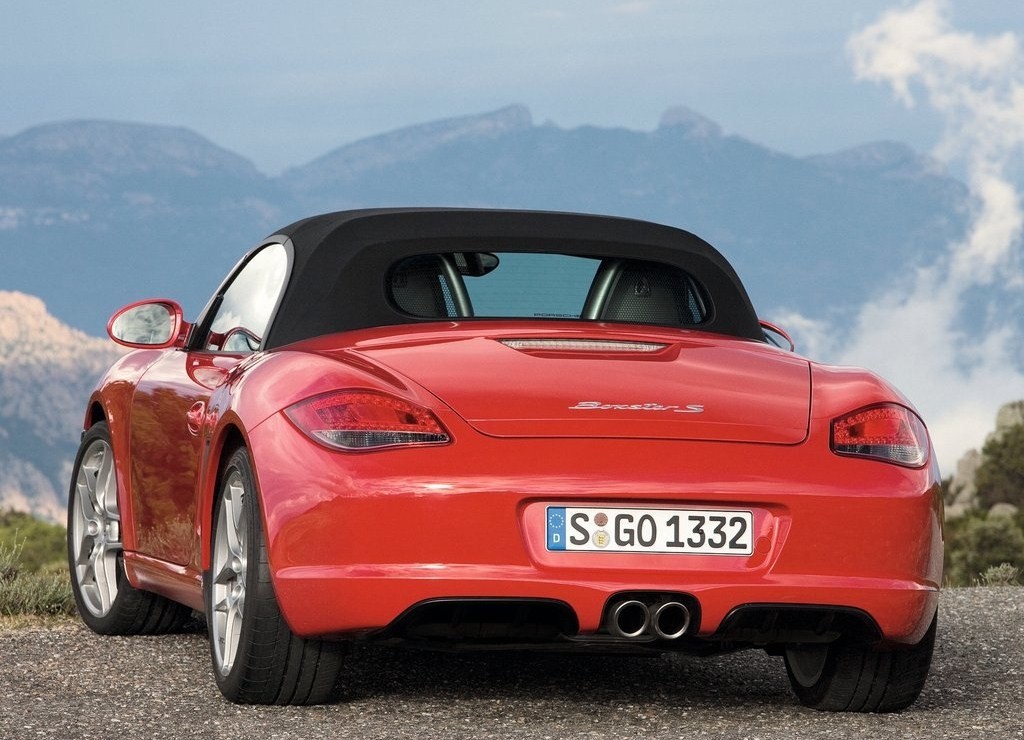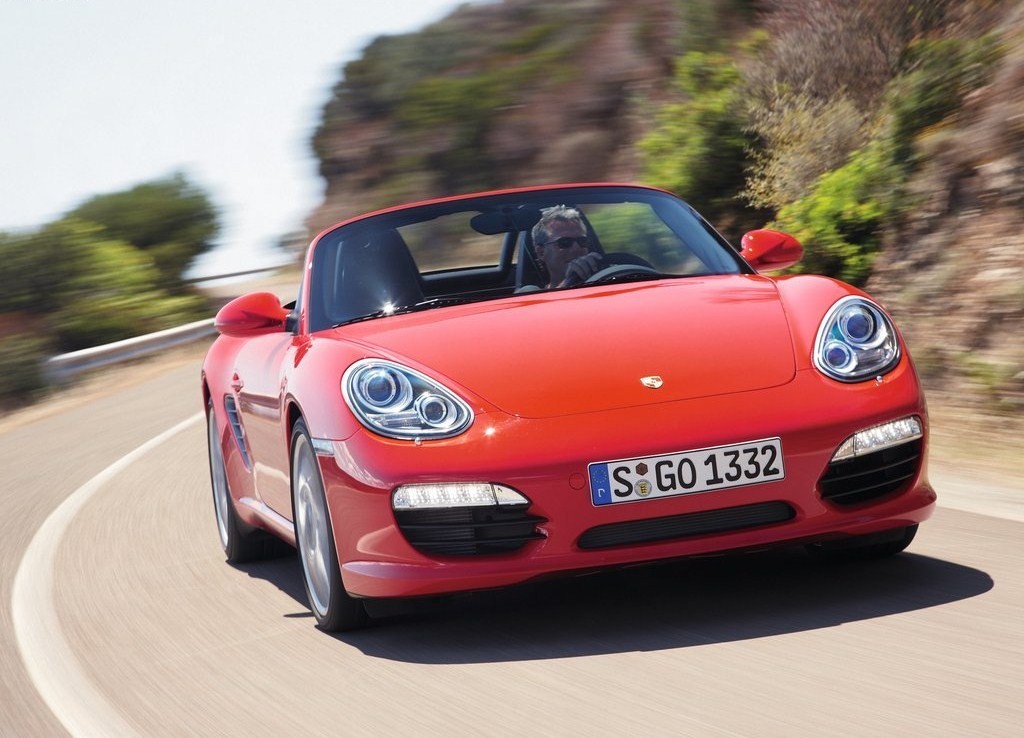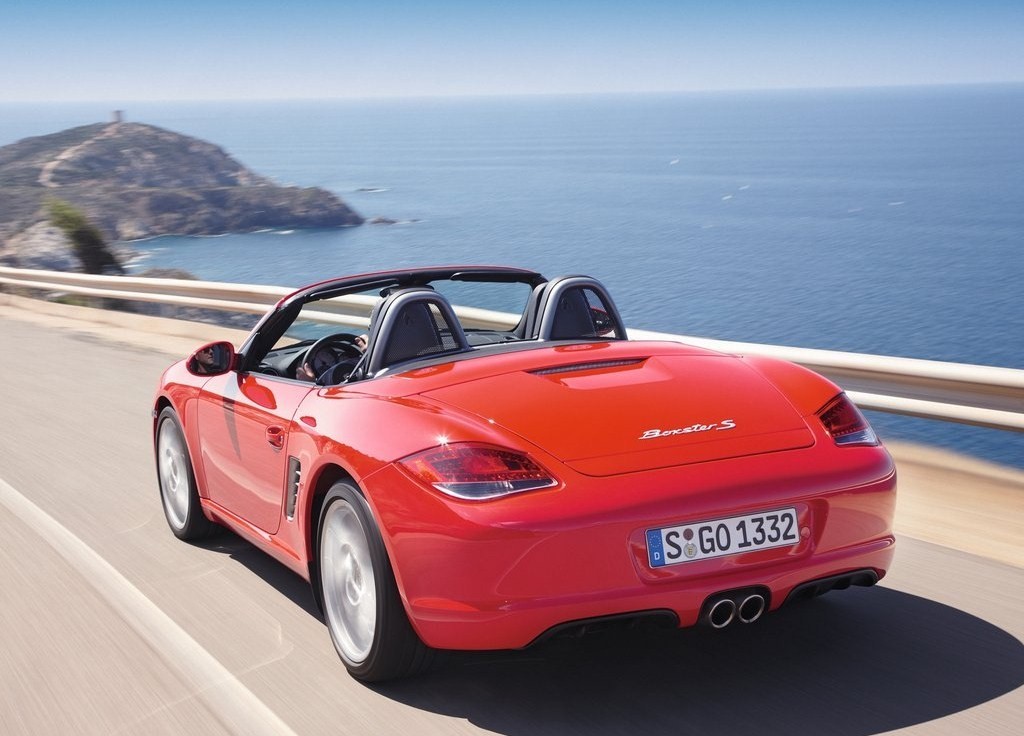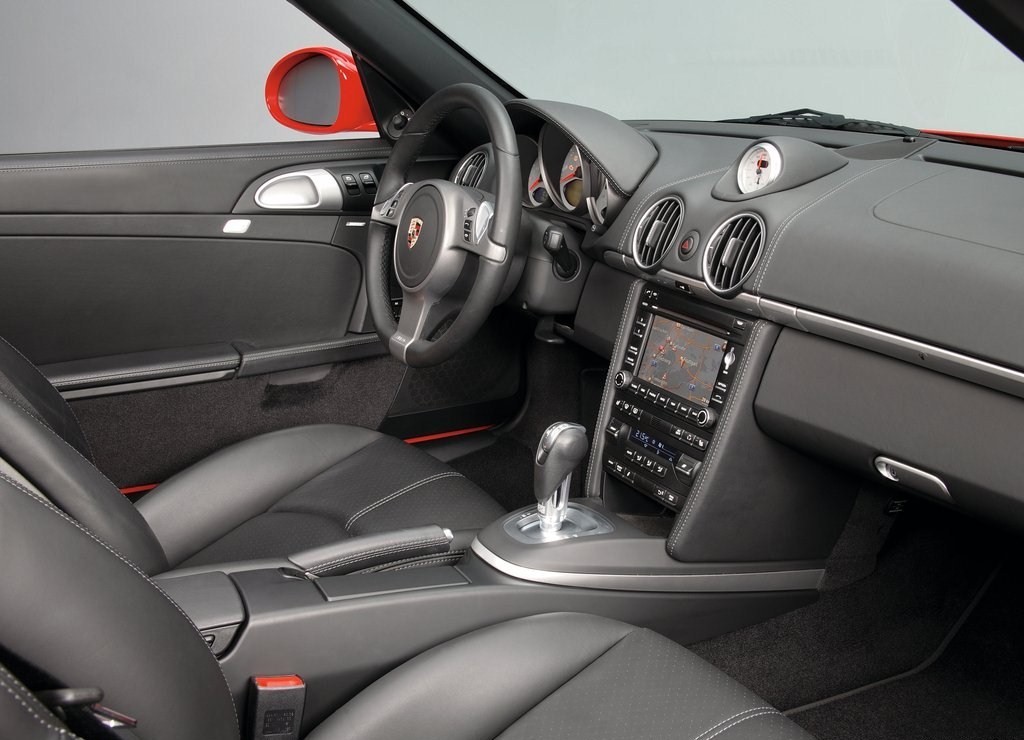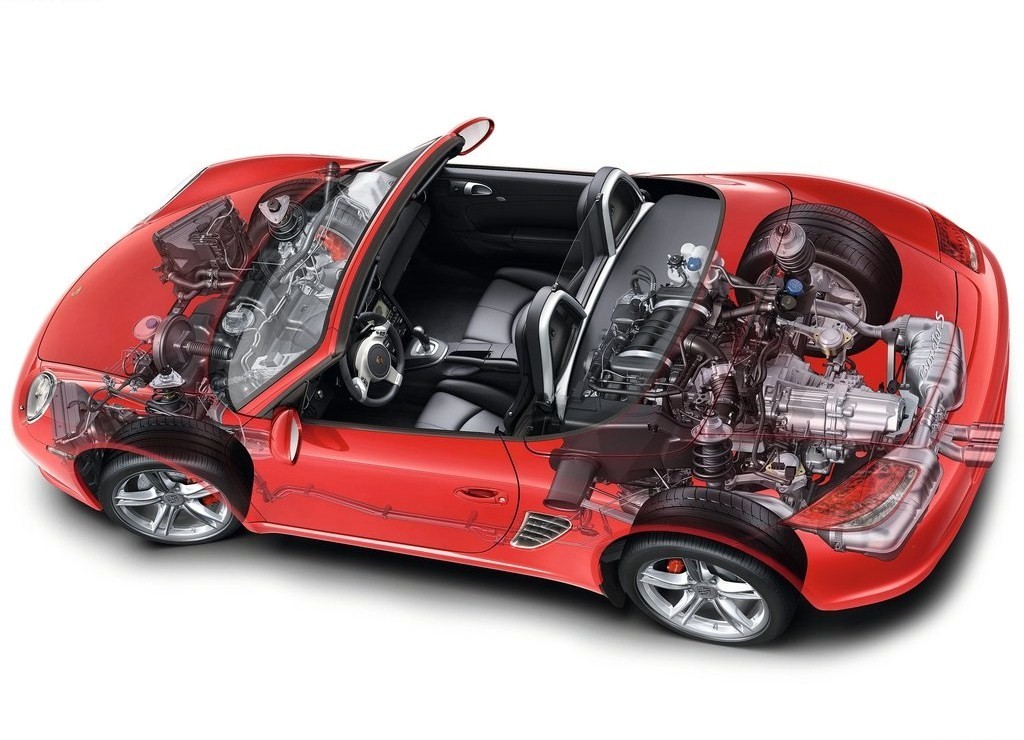
- Powerful free-revving engines
- Balanced, agile chassis
- Outstanding ride/handling balance
- Precise, well-weighted steering has excellent feel
- Responsive brakes
- Variable ratio steering not as sensitive off-centre as predecessor
- Illogical speedometer calibration
- Intermediate Shaft bearing susceptible to failure
- Reports of bore scoring on pre-2007 3.4-litre M97 engines
- High servicing and repair costs
Review: Porsche 987.I Boxster (2005-08)
Overview
Released in March 2005, the Porsche 987 Series I (987.I) Boxster was a mid-engined, soft-top convertible. Manufactured in Stuttgart, Germany, the rear-wheel drive 987 Boxster was initially available with 2.7- and 3.2-litre horizontally-opposed six cylinder petrol engines (see table below). In November 2006, the Boxster was updated and the 3.2-litre engine was replaced with a more powerful 3.4-litre unit.
Engines
The horizontally-opposed six-cylinder engines featured two-piece (vertically split) aluminium blocks, integrated dry-sump lubrication, liquid cooling, double overhead camshafts, four valves per cylinder and Porsche’s VarioCam variable intake valve timing system. For the 987 Boxster, the engines were fitted with larger air filters and larger intake manifolds which had two-chamber pipes and distributor flaps between the cylinder banks. From November 2006, the 2.7- and 3.4-litre engines were fitted with Porsche’s VarioCam Plus system. With VarioCam Plus, variable valve timing was combined with two-stage lift on the intake side via electro-hydraulically operated switchable tappets.
Dimensions and suspension
Compared to the 986 Boxster , the 987 Boxster was 38 mm longer (at 4359 mm), 20 mm wider (1801 mm) and 31 mm lower (1259 mm), though wheelbase length was unchanged (2416 mm). Furthermore, the 987 Boxster achieved a 9 per cent increase in torsional stiffness, while bending rigidity increased by 14 per cent. The Boxster’s power-operated, soft-top roof could be opened or lowered in 12 seconds and at speeds of up to 50 km/h.
Like its predecessor, the 987 Boxster had MacPherson strut suspension front and rear.
| Years | Engine | Trans. | Peak power | Peak torque | |
|---|---|---|---|---|---|
| Boxster | 2005-06 | 2.7-litre M96.25 F6 | 5sp man., 6sp man., 5sp auto |
176 kW at 6400 rpm | 270 Nm at 4700 rpm |
| 2006-08 | 2.7-litre M97.20 F6 | 5sp man., 6sp man., 5sp auto |
180 kW at 6250 rpm | 273 Nm at 4400-6000 rpm | |
| Boxster S | 2005-06 | 3.2-litre M96.26 F6 | 6sp man., 5sp auto |
206 kW at 6200 rpm | 320 Nm at 4700 rpm |
| 2006-08 | 3.4-litre M97.21 F6 | 6sp man., 5sp auto |
217 kW at 6500 rpm | 340 Nm at 4600-6000 rpm | |
| Boxster RS60 Spyder | 2008 | 3.4-litre M97.22 F6 | 6sp man., 5sp auto |
223 kW at 6250 rpm | 340 Nm at 4600-6000 rpm |
Safety equipment
Standard safety equipment for the 987.I Boxster included dual front airbags, front seat-mounted thorax airbags, front door-mounted head-protecting airbags, ABS, brake assist, electronic stability control, traction control and front seatbelts with pretensioners and load limiters. From November 2006, standard safety equipment was extended to include electronic brake force distribution.
Brakes
The Boxster had 298 mm by 24 mm ventilated front brake discs with four-piston aluminium monobloc front calipers. The Boxster S, however, had 318 mm by 28 mm front brake discs.
Features: Boxster
Standard features for the Boxster included 17-inch alloy wheels, four speaker sound system with six-stack CD player, climate control air conditioning, power adjustable front seats with leather trim, cruise control, remote central locking, power windows and heated mirrors, tinted windows, a trip computer, motion-sensing alarm and an immobiliser. From November 2006, standard features were extended to include a seven speaker, 230 watt sound system with a single CD player and front fog lamps.
The six-speed manual models were also fitted with Porsche’s Active Suspension Management Technology (PASM). With continuously adjustable shock absorbers and a pair of accelerometers, PASM offered selectable ‘Normal’ and ‘Sport’ modes. In Sport mode, the suspension lowered the car by 10 mm and a firmer damper control map was activated. In its normal setting, the PASM would automatically adjust to changes in driving style, becoming firmer in response to greater dynamic forces.
Features: Boxster S
Compared to the standard Boxster, the Boxster S was further equipped with 18-inch alloy wheels, front fog lamps and ambient lighting.
2008 Boxster RS60 Spyder
In April 2008, a limited-run RS60 Spyder variant was released. Compared to the S, the RS60 featured a dual exhaust (producing a slight power increase), 19-inch alloy wheels with wheel spacers (for increased track) and an active suspension system. Visually, the RS60 could be identified by its Porsche SportDesign front mask, silver metallic paint finish, red leather interior, red soft-top roof, black windscreen frame, red centre console and silver roll bars and seatbelts.
Review: Porsche 987.II Boxster (2009-11)
Overview
Released in March 2009, the 987 Series II (987.II) Boxster introduced improved equipment levels, a new 2.9-litre engine for the standard Boxster, direct-injection for the 3.4-litre engine and seven-speed double-clutch transmissions (DCT, or Porsche Doppelkupplungsgetriebe, PDK).
Visually, the 987.II Boxster could be identified by its new head lights, daytime running lights, larger front air intakes, reshaped LED tail-lights and lower rear end with twin diffusers. Other changes included modified suspension, wider wheels and larger brakes for the S variant. In August 2010, the Boxster Spyder was released (see below).
| Years | Engine | Trans. | Peak power | Peak torque | |
|---|---|---|---|---|---|
| Boxster | 2009-11 | 2.9-litre MA120 F6 | 6sp man., 7sp DCT | 188 kW at 6400 rpm | 290 Nm at 4400-6000 rpm |
| Boxster S | 2009-11 | 3.4-litre MA121 F6 | 6sp man., 7sp DCT | 228 kW at 6400 rpm | 360 Nm at 5500 rpm |
| Boxster Spyder | 2010-11 | 3.4-litre MA121 CF6 | 6sp man., 7sp DCT | 235 kW at 7200 rpm | 370 Nm at 4750 rpm |
Features
Features were improved for the 987.II Boxster, which gained an MP3-compatible sound system with auxiliary inputs (iPod and USB), a six-disc CD/DVD player, satellite navigation with touchscreen display, heated front seats and rear parking sensors.
Porsche Boxster Spyder
Released in August 2010, the Boxster Spyder was a lightweight model which had a manually-operated canopy roof instead of the power-operated soft-top roof of the standard Boxster and Boxster S. Further mass-reduction measures for the Boxster Spyder included its 19-inch alloy wheels, racing seats, belt-style pull doors instead of handles and the omission of daytime running lights and front fog lights. As a result, the Boxster Spyder had a kerb weight of 1275 kg, 80 kg less than the Boxster S.
The Boxster Spyder was powered by the same 3.4-litre engine as used in the 987.II Cayman S , had a unique suspension tune and could be identified by its lower side windows and engine cover with twin bulges.
Brochure
Related links
